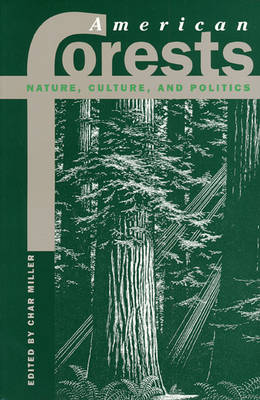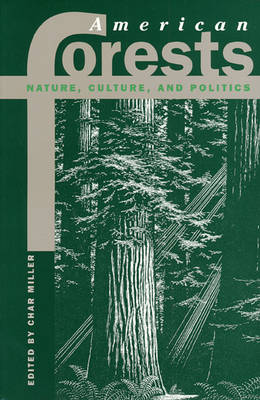
- Afhalen na 1 uur in een winkel met voorraad
- Gratis thuislevering in België vanaf € 30
- Ruim aanbod met 7 miljoen producten
- Afhalen na 1 uur in een winkel met voorraad
- Gratis thuislevering in België vanaf € 30
- Ruim aanbod met 7 miljoen producten
Zoeken
American Forests
Nature, Culture, and Politics
€ 169,95
+ 339 punten
Omschrijving
Endangered ecosystem or renewable resource? How we feel about forests has to do with more than trees. This interdisciplinary collection of essays examines the history of forestry in the United States, exploring the impact of the discipline on natural and human landscapes since the mid-nineteenth century. Through important articles that have helped define the field, it assesses the development of the forestry profession and the U.S. Forest Service, analyzes the political and scientific controversies that have marked forestry's evolution, and discloses the transformations in America's commitment to its forested estate. American Forests highlights the intersection of the political, social, and environmental forces that have determined the use and abuse of American forests. It examines changes both in the assumptions that have defined forest management and in the scientific approach to--and political justification for--timber harvesting in our national forests. It sheds light on the ongoing debate between utilization and conservation, addressing arguments from environmentalists, the timber industry, sportsmen, and politicians while exploring the interaction between public opinion and public policy. It provides sharp insights into the most important players in the politics of forestry, from George Perkins Marsh and Berhard Fernow to Gifford Pinchot and Teddy Roosevelt. And it addresses issues as wide-ranging as budgeting, clearcutting, and the regulation of livestock grazing on national forest lands. This multifaceted volume draws on the insights of scholars in conservation and ecology, economics, history, law, and political science to make a definitive contribution to the study and practice of forestry. By both clarifying and extending recent debate about the political purpose, scientific character, and environmental rationales of forestry in America, it will help define the place of forests in our future.
Specificaties
Betrokkenen
- Uitgeverij:
Inhoud
- Aantal bladzijden:
- 304
- Taal:
- Engels
- Reeks:
Eigenschappen
- Productcode (EAN):
- 9780700608485
- Verschijningsdatum:
- 24/10/1997
- Uitvoering:
- Hardcover
- Formaat:
- Genaaid
- Afmetingen:
- 160 mm x 237 mm
- Gewicht:
- 653 g

Alleen bij Standaard Boekhandel
+ 339 punten op je klantenkaart van Standaard Boekhandel
Beoordelingen
We publiceren alleen reviews die voldoen aan de voorwaarden voor reviews. Bekijk onze voorwaarden voor reviews.










